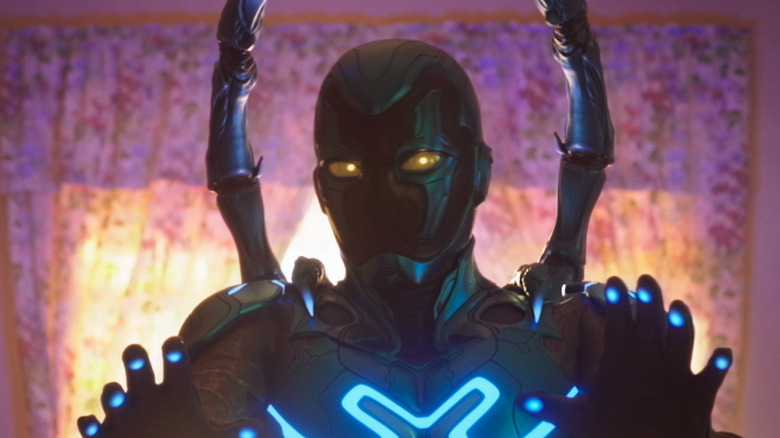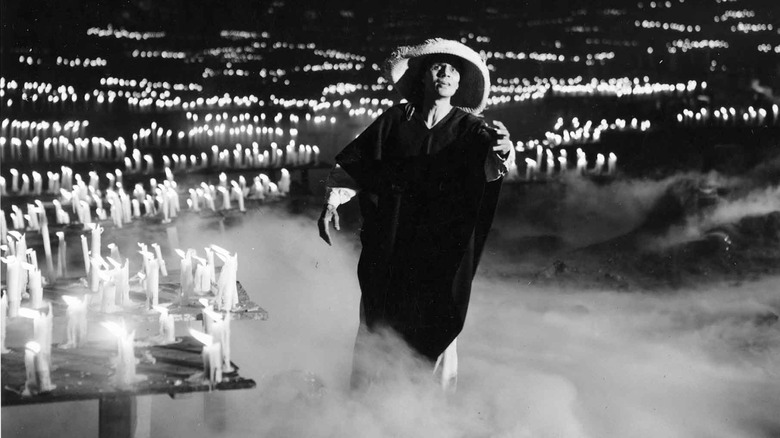Blue Beetle Took Inspiration From A Legendary Mexican Magical Realism Film
Magical realism is an essential part of Latin American fiction, a genre that blurs the lines between fantasy and reality, using mundane settings and stories to explore larger-than-life themes and imagery. Though not commonly associated with superhero movies, it makes sense that the upcoming "Blue Beetle" would take at least some inspiration from the genre.
"Blue Beetle," of course, is set to be the first live-action superhero film with a Latino lead, telling the story of Jaime Reyes (Xolo Maridueña, whose role in "Cobra Kai" landed him the part even without an audition) as he finds a mysterious alien scarab beetle that grants him superpowers. Though technically a part of James Gunn's new DC Universe, "Blue Beetle" is "totally disconnected" from the rest, allowing it to do some experimenting — like drawing inspiration from a classic work of magical realist Mexican cinema.
Speaking with Moviemaker magazine, "Blue Beetle" director Angel Manuel Soto talked about being inspired by the 1960 Mexican film "Macario," about a woodcutter who is visited by the Devil, God, and Death, and taken on a journey to the afterlife. "The magic realism of Macario stuck with me," Soto said, calling out a scene where the titular Macario enters Death's cavern, which is filled with thousands of candles. This striking scene became the inspiration for a key moment in the film. "I was like, 'Man, why don't we pay homage to the movie that built us? Why don't we pay homage to the movie that we can say is Latin cinema?'"
To create the homage to "Macario," Soto worked with the VFX department and production designer to replicate the cascading candles of the 1960 film. "There's no logic to the imagination, except we construct things based on what we have experienced," he said.
A story about family
One aspect where "Blue Beetle" has the chance to really stand out from most superhero movies is its emphasis on family along with its balance between the mundane and the extraordinary. As Maridueña told Moviemaker, "We aren't dealing with an alien invasion that's going to take over the whole world, or a monster that's going to destroy the city," instead the film is "about issues that not only Jaime faces, but the whole Reyes family."
This gets to the root of magical realism, wherein you present ordinary people in ordinary settings, who experience supernatural or otherwise extraordinary things without overwhelming or drastically changing the mundanity. Of course, Jaime's life will be forever changed by becoming a superhero, but that doesn't mean the family's daily life or troubles will change. After all, they are still a Latino family in the U.S. and there are scenes that echo ICE raids.
"I needed the depiction to be triggering, because it's the experience of many," Soto explained. "Without having superpowers, the family goes to every length to protect their kid. The love of Jaime's family helps him finish his journey and his arc." And yet, Maridueña said the film is very much a celebration of Latino families rather than a story focused on trauma. "The Reyes family is proud, and although yeah, they struggle and go through hardships, it's always something that they can overcome — and they never ask for pity."
"Blue Beetle" is going to face an uphill battle at the box office, but it also has the potential to add something unique to the superhero landscape. Look for it in theaters on August 18, 2023.

